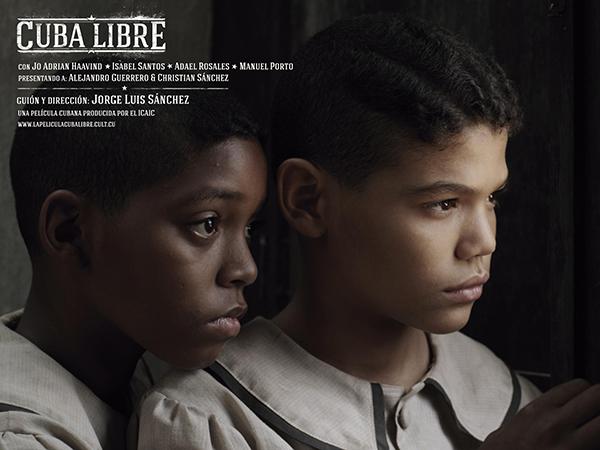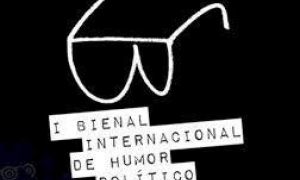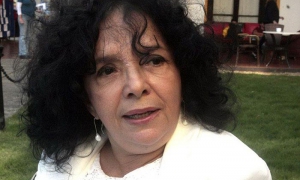
Director Jorge Luis Sánchez has taken on various challenges in his new film Cuba libre, with an exclusive screening held for Cuban Culture Day (October 20) before the work is presented, later this year, during the International Festival of New Latin American Cinema of Havana.
A beautiful and greatly symbolic film, set during 19th century Cuba toward the end of the country’s War of Independence.
According to the synopsis the picture “depicts situations in which the three armies converge, through the actions of two Cuban boys.”
Although the plot might seem simple, its quite complex. Various surprises and details about the film were revealed by its director and scriptwriter Jorge Luis Sánchez, during a press conference at the Fresa y Chocolate Cultural Center, which also saw the participation of a good part of the cast and technical team.
The conversation began on the topic of the script, which seemed “timely” to many, especially after December 17 (D17), 2014 when Cuba and the U.S. announced their intention to work toward the restoration of relations.
“It’s a script I wrote in 1998 and has finally come to fruition after two attempts. The project was approved in 2012 and we began filming in 2013, a two-year-long process. It has nothing to do with D17,” he reaffirmed, “It’s not an opportunistic work nor was it commissioned.”
The director noted that it is a complicated script from a production point of view, “But Cuban cinema has a great tradition of period films,” (such as Lucia, by Humberto Solás, or La primera carga al machete, by Manuel Octavio Gómez).
“Why did I write it? Firstly, because I like the history of my country, and obviously, I was interested in exploring a complex moment, and then I thought about two children in their innocent youth having to deal with this situation.”
One of the challenges is “working with young children, but this is another element masterfully handled by Cuban directors in films such as Viva Cuba, by Juan Carlos Cremata and Ernesto Daranas’ Conducta. I sent out a massive casting call,” and Alejandro Guerrero (Simón) and Christian Sánchez (Samuel) were chosen for the parts.
Sánchez knew it was vital to get the casting right. He asked for sincere, sober and restrained performances, all of which were granted him by great Cuban actors: Manuel Porto, in the role of Father Gabriel; Isabel Santos, the teacher Alfonsa; Georgina Almanza, the mambi fighter Ma Julia, and the young Adael Rosales, Mambí coronel José María Armenteros, together with Norwegian actor Jo Adrian Haavind, who plays the character of U.S. soldier Johnson.
During the press conference, experienced actress Isabel Santos who plays every role as if it were her first time on camera, warned that she doesn’t believe in “representations when it comes to performing. This is my work and the only thing I know how to do; the most difficult thing for me was to be surrounded by children, I knew that I couldn’t let anything distract me. Jorge Luis is a director from the old school of ICAIC, and works with great rigor, and I demand the same of myself, he makes the type of cinema I yearn for. We did a lot of workshops, and for me it’s not just another film, you never known when they’ll call you up again.”
Haavind from Norway stated that he learned about the film through his agent. “I was interested, I sent in a demo, and started to study English with a U.S. accent. I stayed with Norwegians and Scandinavians living in New York. We had a week of rehearsals and character development, which was a great privilege, and something we don’t often receive. It was a pleasure to film here, it was very professional.”
Thorough research plays an important role in period dramas such as Cuba Libre. “I spent months researching, above all in newspaper archives at the National Library. I found lots of photos of Black U.S. soldiers, who were the majority among those who came, mainly from the southern states. They were called “buffalo soldiers.” This is a thoroughly researched film,” emphasized Sánchez
That is to say the film includes historical elements but which have been reworked, and this is the director’s personal contribution. “You can’t play around with history, but art gives me the authority to create my own work, as long as it’s believable.”
In order to achieve an authentic period look Sánchez and his team carried out vigorous studies, complemented by the excellent work of renowned producer Rafael Solís and Nanette García in costume and artistic direction.
García went in search of and found suitable locations given the architecture of the buildings in Ceiba del agua (school), Tapaste (church) and Jaruco where they recreated the U.S. campsite. “We undertook a great scenographic reconstruction, creating a completely fictitious town with colonial style facades.” In regards to costume, Sánchez had the unique challenge of depicting the U.S. army which invaded the island in 1898, their uniforms, and insignias.
The film was produced by the Cuban Institute of Cinematographic Art and Industry (ICAIC) and the Cultural Goods Fund (FCBC), “something which made its realization possible,” noted Sánchez, “because making period film is no easy task. The support of Jorge Alfonso, FCBC director, was vital, which included financing but also work with artisans to make epaulettes, uniforms buttons, canteens, sabers, bayonets belonging to three different troops.”
The soundtrack, by composer Juan Manuel Ceruto, plays an important role in creating the appropriate atmosphere for the film. “Jorge Luis wanted sad unassuming music, I stripped it down to the bare essentials, and after presenting a large variety of options, decided to go with symphony music, primarily the strings section, without much input from the rest of the orchestra, only at the end did we incorporate additional orchestral elements.”
Cuba Libre, Jorge Luis Sánchez’s third feature length film (El Benny - 2006, inspired by the life of the legendary Cuban musician and musical Irremediablemente juntos in 2011) is completely different, a historic, period film, a rarity in contemporary Cuban cinema.






